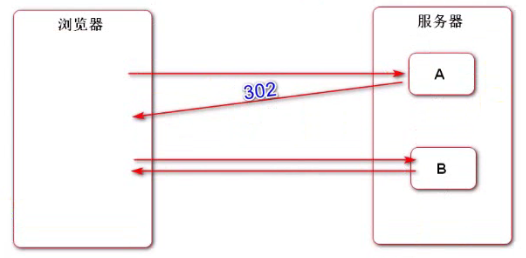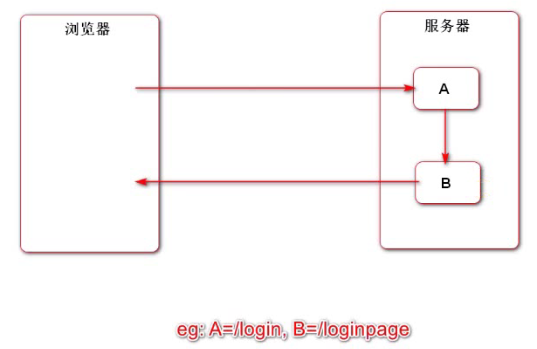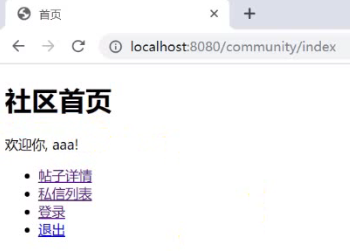问答平台(7),Spring Security
Spring Security
原理图

简介
Spring Security 是一个专注于为 Java 应用程序提供身份认证和授权的框架,它的强大之处在于可以轻松扩展以满足自定义的需求。
特征
1 | |
springsecurity demo
引入依赖
1 | |
实体
- User: 修改
1
2
3
4
5
6
7
8
9
10
11
12
13
14
15
16
17
18
19
20
21
22
23
24
25
26
27
28
29
30
31
32
33
34
35
36
37
38
39
40
41
42public class User implements UserDetails {
// true: 账号未过期
@Override
public boolean isAccountNonExpired() {
return true;
}
// true: 账号未锁定
@Override
public boolean isAccountNonLocked() {
return true;
}
// true: 凭证未过期
@Override
public boolean isCredentialsNonExpired() {
return true;
}
// true: 账号可用
@Override
public boolean isEnabled() {
return true;
}
@Override
public Collection<? extends GrantedAuthority> getAuthorities() {
List<GrantedAuthority> list = new ArrayList<>();
list.add(new GrantedAuthority() {
@Override
public String getAuthority() {
switch (type) {
case 1:
return "ADMIN";
default:
return "USER";
}
}
});
return list;
}
}
业务层
- UserService: 修改
1
2
3
4
5
6
7
8
9
10
11
12
13
14
15@Service
public class UserService implements UserDetailsService {
@Autowired
private UserMapper userMapper;
public User findUserByName(String username) {
return userMapper.selectByName(username);
}
@Override
public UserDetails loadUserByUsername(String usernamme) throws UsernameNotFoundException {
return this.findUserByName(usernamme);
}
}
表现层
- HomeController: 修改
1
2
3
4
5
6
7
8
9
10
11
12
13
14
15@RequestMapping(path = "/index", method = RequestMethod.GET)
public String getIndexPage(Model model) {
// 认证成功后,结果会通过SecurityContextHolder存入SecurityContext中
Object obj = SecurityContextHolder.getContext().getAuthentication().getPrincipal();
if (obj instanceof User) {
model.addAttribute("loginUser", obj);
}
return "/index";
}
// 拒绝访问时的提示页面
@RequestMapping(path = "/denied", method = RequestMethod.GET)
public String getDeniedPage() {
return "/error/404";
}
config
- SecurityConfig: 新增
1
2
3
4
5
6
7
8
9
10
11
12
13
14
15
16
17
18
19
20
21
22
23
24
25
26
27
28
29
30
31
32
33
34
35
36
37
38
39
40
41
42
43
44
45
46
47
48
49
50
51
52
53
54
55
56
57
58
59
60
61
62
63
64
65
66
67
68
69
70
71
72
73
74
75
76
77
78
79
80
81
82
83
84
85
86
87
88
89
90
91
92
93
94
95
96
97
98
99
100
101
102
103
104
105
106
107
108
109
110
111
112
113
114@Configuration
public class SecurityConfig extends WebSecurityConfigurerAdapter {
@Autowired
private UserService userService;
@Override
public void configure(WebSecurity web) throws Exception {
// 忽略静态资源的访问
web.ignoring().antMatchers("/resources/**");
}
// AuthenticationManager: 认证的核心接口.
// AuthenticationManagerBuilder: 用于构建AuthenticationManager对象的工具.
// ProviderManager: AuthenticationManager接口的默认实现类.
@Override
protected void configure(AuthenticationManagerBuilder auth) throws Exception {
// 内置的认证规则
// auth.userDetailsService(userService).passwordEncoder(new Pbkdf2PasswordEncoder("12345"));
// 自定义认证规则
// AuthenticationProvider: ProviderManager持有一组AuthenticationProvider,每个AuthenticationProvider负责一种认证.
// 委托模式: ProviderManager将认证委托给AuthenticationProvider.
auth.authenticationProvider(new AuthenticationProvider() {
// Authentication: 用于封装认证信息的接口,不同的实现类代表不同类型的认证信息.
@Override
public Authentication authenticate(Authentication authentication) throws AuthenticationException {
String username = authentication.getName();
String password = (String) authentication.getCredentials();
User user = userService.findUserByName(username);
if (user == null) {
throw new UsernameNotFoundException("账号不存在!");
}
password = CommunityUtil.md5(password + user.getSalt());
if (!user.getPassword().equals(password)) {
throw new BadCredentialsException("密码不正确!");
}
// principal: 主要信息; credentials: 证书; authorities: 权限;
return new UsernamePasswordAuthenticationToken(user, user.getPassword(), user.getAuthorities());
}
// 当前的AuthenticationProvider支持哪种类型的认证.
@Override
public boolean supports(Class<?> aClass) {
// UsernamePasswordAuthenticationToken: Authentication接口的一个常用的实现类.
return UsernamePasswordAuthenticationToken.class.equals(aClass);
}
});
}
@Override
protected void configure(HttpSecurity http) throws Exception {
// 登录相关配置
http.formLogin()
.loginPage("/loginpage")
.loginProcessingUrl("/login")
.successHandler(new AuthenticationSuccessHandler() {
@Override
public void onAuthenticationSuccess(HttpServletRequest request, HttpServletResponse response, Authentication authentication) throws IOException, ServletException {
response.sendRedirect(request.getContextPath() + "/index");
}
})
.failureHandler(new AuthenticationFailureHandler() {
@Override
public void onAuthenticationFailure(HttpServletRequest request, HttpServletResponse response, AuthenticationException e) throws IOException, ServletException {
request.setAttribute("error", e.getMessage());
request.getRequestDispatcher("/loginpage").forward(request, response);
}
});
// 退出相关配置
http.logout()
.logoutUrl("/logout")
.logoutSuccessHandler(new LogoutSuccessHandler() {
@Override
public void onLogoutSuccess(HttpServletRequest request, HttpServletResponse response, Authentication authentication) throws IOException, ServletException {
response.sendRedirect(request.getContextPath() + "/index");
}
});
// 授权配置
http.authorizeRequests()
.antMatchers("/letter").hasAnyAuthority("USER", "ADMIN")
.antMatchers("/admin").hasAnyAuthority("ADMIN")
.and().exceptionHandling().accessDeniedPage("/denied");
// 增加Filter,处理验证码
http.addFilterBefore(new Filter() {
@Override
public void doFilter(ServletRequest servletRequest, ServletResponse servletResponse, FilterChain filterChain) throws IOException, ServletException {
HttpServletRequest request = (HttpServletRequest) servletRequest;
HttpServletResponse response = (HttpServletResponse) servletResponse;
if (request.getServletPath().equals("/login")) {
String verifyCode = request.getParameter("verifyCode");
if (verifyCode == null || !verifyCode.equalsIgnoreCase("1234")) {
request.setAttribute("error", "验证码错误!");
request.getRequestDispatcher("/loginpage").forward(request, response);
return;
}
}
// 让请求继续上下执行
filterChain.doFilter(request, response);
}
}, UsernamePasswordAuthenticationFilter.class);
// 记住我
http.rememberMe()
.tokenRepository(new InMemoryTokenRepositoryImpl())
.tokenValiditySeconds(3600 * 24)
.userDetailsService(userService);
}
}
重定向与转发


页面
- login.html: 修改(提示信息、p标签)
1
2
3
4
5
6
7
8
9
10
11<form method="post" th:action="@{/login}">
<p style="color:red;" th:text="${error}">
<!--提示信息-->
</p>
<p>
账号:<input type="text" name="username" th:value="${param.username}">
</p>
<p>
密码:<input type="password" name="password" th:value="${param.password}">
</p>
</form> - index.html: 修改
1
2
3
4
5
6
7
8
9
10
11
12
13
14<!--欢迎信息-->
<p th:if="${loginUser!=null}">
欢迎你,<span th:text="${loginUser.username}"></span>!
</p>
<ul>
<li><a th:href="@{/discuss}">帖子详情</a></li>
<li><a th:href="@{/letter}">私信列表</a></li>
<li><a th:href="@{/loginpage}">登录</a></li>
<li>
<form method="post" th:action="@{/logout}">
<a href="javascript:document.forms[0].submit();">退出</a>
</form>
</li>
</ul>
结果展示

1 | |
参考资料
问答平台(7),Spring Security
https://lcf163.github.io/2020/06/11/问答平台(7),Spring-Security/